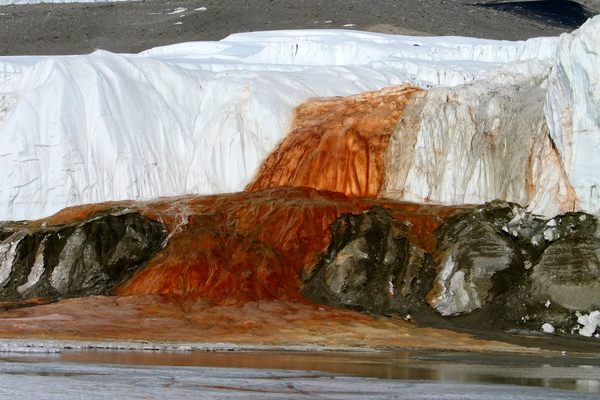The Mighty Antarctic Microbes That Survive on Air Alone
It turns out the “minimal nutritional requirements for life” are quite minimal indeed.

In July 1952, a Florida newspaper columnist recounted a chance meeting with a man who professed to survive on nothing but air. “Our man, the Breatharian, appeared fit enough,” the columnist noted in the Orlando Sentinel. “He might have been 100, but didn’t look it.” The columnist, seemingly bemused and more than a little enchanted by the whole gambit, took a gulp of the Florida air and mulled it over: Was he ready to eschew food and water and see if air alone could keep him alive? Maybe. But then he caught a whiff of ham on the breeze, and changed his mind.
Every few years, reporters seem to seize on stories like this, somewhat breathlessly and with varying degrees of skepticism. Medical practitioners dispute these tales of people living on air alone, but who’s to say that some other form of life might not be able to make it work? Extremophile life does survive at searing temperatures, crushing depths, and places without access to oxygen, water, or sunlight.
Take the rock outcroppings of polar deserts. They’re hostile: parched, with little vegetation and scant patches of ice. Many of these areas spend half the year blanketed in complete darkness. Antarctica’s Robinson Ridge, for example, isn’t laying out any kind of welcome mat, but there are still plenty of tenants. “The cold, dark, and dry desert regions are home to a surprisingly rich diversity of microbial communities,” said Belinda Ferrari, a professor at Australia’s University of New South Wales in a release. With a team of collaborators, Ferrari recently set out to see how those bacterial colonies kept teeming in an environment with so little to offer.
The answer seems to be at once simple and quite complicated: Some of them thrive on air alone.

The scientists collected soil samples from two polar deserts in eastern Antarctica, and then sequenced the microbial DNA they found. The samples showed an abundance of actinobacteria, a little cyanobacteria, and two groups of unknown bacteria. Researchers found that without much sunlight (for long stretches), water, or reserves of organic carbon, these new microbes live on atmospheric gases, including hydrogen and carbon monoxide, a process Ferrari and her team liken to scavenging. The results, which were recently published in Nature, lower the threshold for “minimal nutritional requirements for life” in extreme, nutrient-starved environs.
This new research stokes possibilities for future work about life in inhospitable terrain—Earth-bound and otherwise—and the creatures that may or may not eke out survival there. According to Ferrari, the work “opens up the possibility of atmospheric gases supporting life on other planets.”



















Follow us on Twitter to get the latest on the world's hidden wonders.
Like us on Facebook to get the latest on the world's hidden wonders.
Follow us on Twitter Like us on Facebook